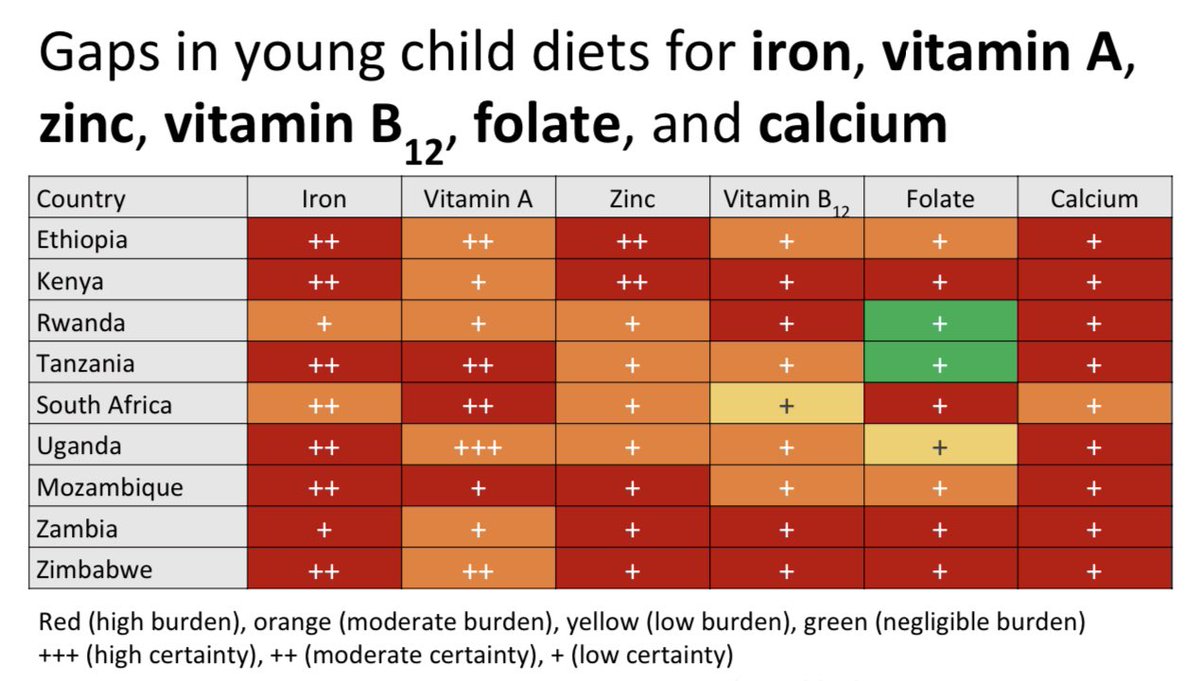
Optimal sources of iron, zinc, calcium, folate, vitamin A & B12 are organs, small dried fish, cheese, beef/goat, eggs & dark leafy greens
Shows grams & kcals needed to provide 1/3 of recommended intakes for pregnant women
Nutrient density rating is preliminary & explained below
Shows grams & kcals needed to provide 1/3 of recommended intakes for pregnant women
Nutrient density rating is preliminary & explained below

Foods with optimal nutrient density provide an average of 33.3% of recommended intakes with ≤ 16.7% of both energy (2,583 kcal) and mass (1987 g) recommended intakes (assuming an energy density of 1.3 kcal/g).
Foods with high nutrient density provide an average of 33.3% of recommended intakes with ≤ 33.3% of both energy and mass recommended intakes and with < 16.7% of either energy or mass recommended intakes.
Foods with adequate nutrient density provide an average of 33.3% of recommended intakes with 16.7%–33.3% of both energy and mass recommended intakes.
Foods with inadequate nutrient density provide an average of 33.3% of recommended intakes with > 33.3% of either energy or mass recommended intakes.
For the quantity to provide an average of one-third of recommended intakes for iron, zinc, vitamin A, calcium, folate, and vitamin B12, each micronutrient’s contribution is capped at 100% of daily recommended intakes.
Nutrient density values averaged across multiple food composition tables in the Americas, Africa & Asia. Analysis shows which foods are the best sources of each nutrient and overall. Next we are analyzing other vulnerable groups, including young children, adolescents, and women.
The six micronutrients are included because they are commonly lacking in low- & middle-income countries & can cause severe health consequences. Knowing which foods are the best sources of each nutrient & overall can help programs & policies improve diets & reduce undernutrition.
And some of these nutrients are also lacking in high-income countries, especially iron among women
https://twitter.com/TyRBeal/status/1392879458802184200?s=20
Quantities required (g & kcal) to provide 1/3 of recommended iron intakes for pregnant women
Requirements ⬆️ during pregnancy
27 mg for those eating substantial amounts of meat, seafood, vitamin C (18% bioavailability)
49 mg for those on a vegetarian diet (10% bioavailability)

Requirements ⬆️ during pregnancy
27 mg for those eating substantial amounts of meat, seafood, vitamin C (18% bioavailability)
49 mg for those on a vegetarian diet (10% bioavailability)


Traditional grains like fonio and teff are good sources of iron, zinc, and folate. cc @justjody23 @chrisvogliano @AnnaWHerforth
Iron bioavailability was adjusted based on the amount of heme iron. Zinc bioavailability was adjusted based on the amount of phytate.
• • •
Missing some Tweet in this thread? You can try to
force a refresh









